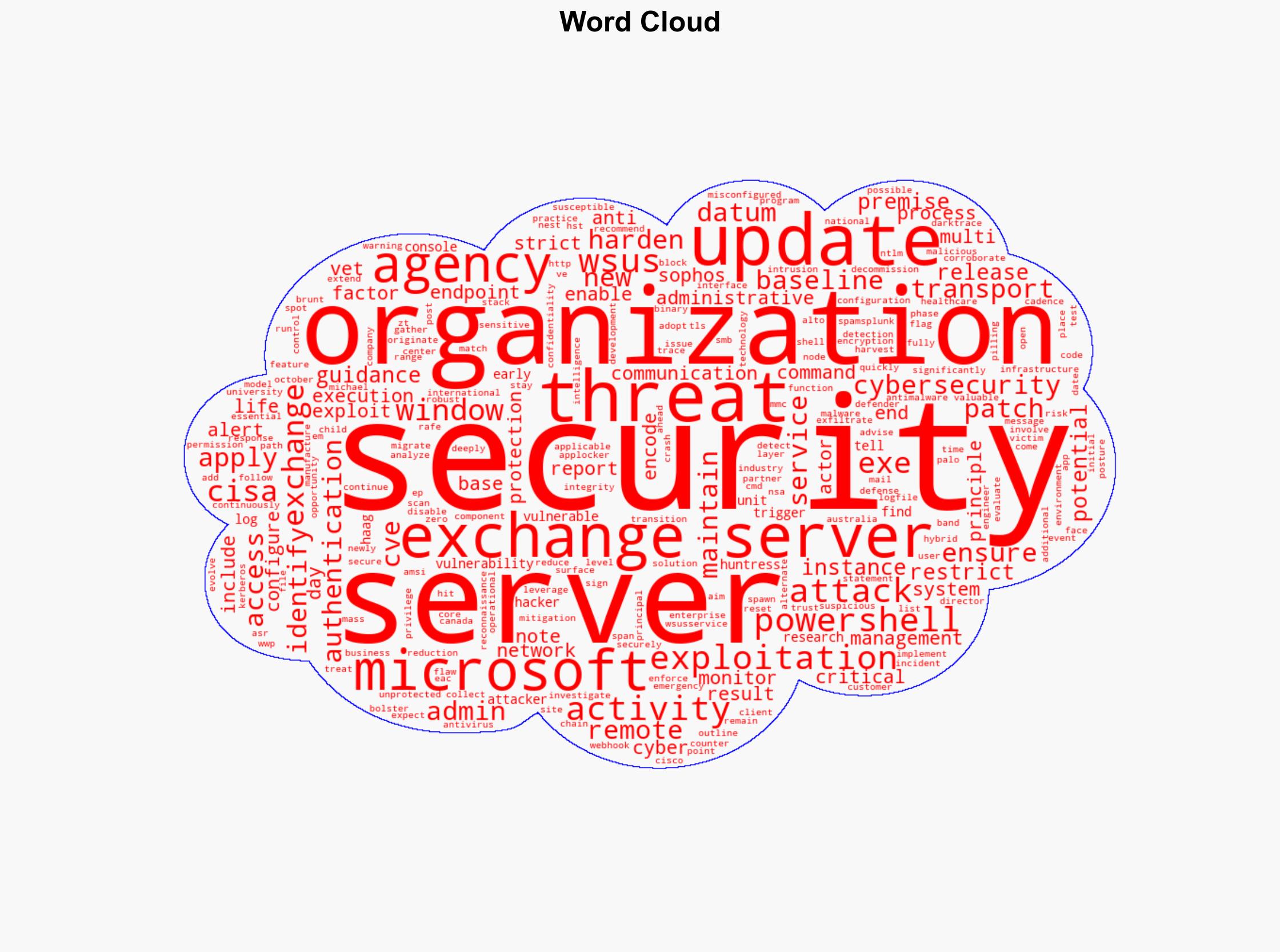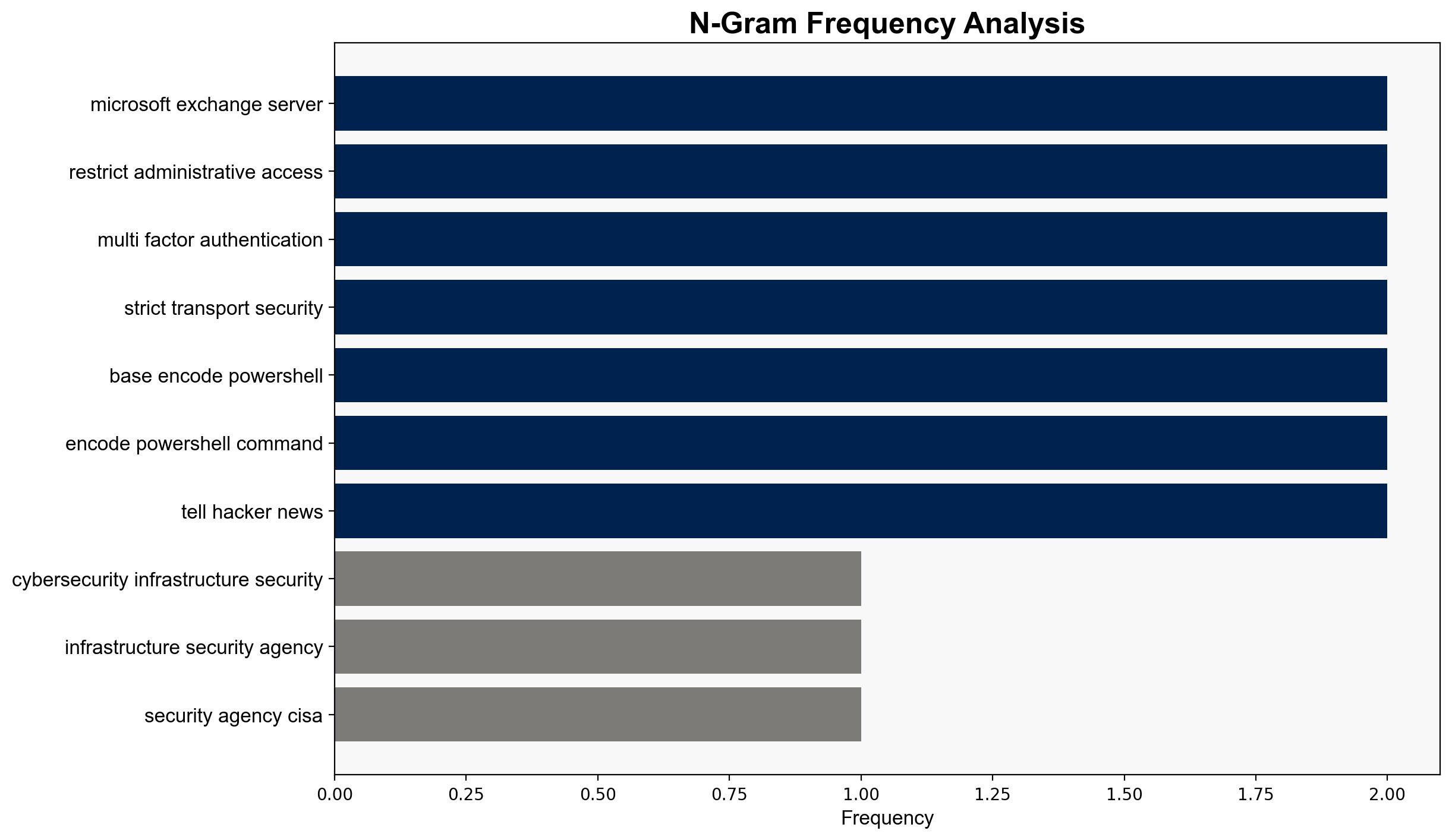CISA and NSA Issue Urgent Guidance to Secure WSUS and Microsoft Exchange Servers – Internet
Published on: 2025-10-31
Intelligence Report: CISA and NSA Issue Urgent Guidance to Secure WSUS and Microsoft Exchange Servers – Internet
1. BLUF (Bottom Line Up Front)
The most supported hypothesis is that the guidance issued by CISA and NSA is a proactive measure to mitigate imminent cyber threats targeting Microsoft Exchange and WSUS servers. This assessment is based on the recent detection of exploitation activities and the urgency of the guidance. Confidence Level: High. Recommended action includes immediate implementation of the specified security measures and continuous monitoring for potential threats.
2. Competing Hypotheses
1. **Proactive Defense Hypothesis**: The guidance is a proactive measure to prevent imminent cyber threats targeting Microsoft Exchange and WSUS servers, as indicated by recent exploitation activities and vulnerabilities.
2. **Routine Security Update Hypothesis**: The guidance is part of routine security updates and not necessarily indicative of an immediate threat, but rather a general precautionary measure to maintain cybersecurity hygiene.
Using Analysis of Competing Hypotheses (ACH 2.0), the Proactive Defense Hypothesis is better supported due to the timing of the guidance following recent exploitation reports and the specific mention of newly patched vulnerabilities.
3. Key Assumptions and Red Flags
– **Assumptions**: It is assumed that the guidance is based on credible threat intelligence and that organizations have the capability to implement the recommended security measures.
– **Red Flags**: The urgency of the guidance may indicate undisclosed specific threats. Lack of detailed threat actor attribution could be a blind spot.
– **Potential Bias**: Confirmation bias may lead to overestimating the immediacy of the threat based on recent exploitation reports.
4. Implications and Strategic Risks
– **Cybersecurity Risks**: Failure to implement the guidance could lead to significant data breaches, affecting critical infrastructure and sensitive data.
– **Economic Impact**: Successful cyber attacks could disrupt business operations, leading to financial losses.
– **Geopolitical Dimensions**: If state actors are involved, this could escalate tensions and lead to retaliatory cyber operations.
– **Psychological Impact**: Persistent cyber threats may erode trust in digital infrastructure and government advisories.
5. Recommendations and Outlook
- **Immediate Actions**: Implement multi-factor authentication, restrict administrative access, and apply all recommended security updates.
- **Continuous Monitoring**: Establish robust monitoring systems to detect and respond to suspicious activities promptly.
- **Scenario Projections**:
– **Best Case**: Successful mitigation of threats with no significant breaches.
– **Worst Case**: Major data breaches occur due to delayed implementation of security measures.
– **Most Likely**: Some organizations experience minor breaches, but widespread damage is prevented through timely action.
6. Key Individuals and Entities
– CISA
– NSA
– Microsoft
– Darktrace
– Huntress
– Palo Alto Networks
– Sophos
7. Thematic Tags
national security threats, cybersecurity, counter-terrorism, regional focus





